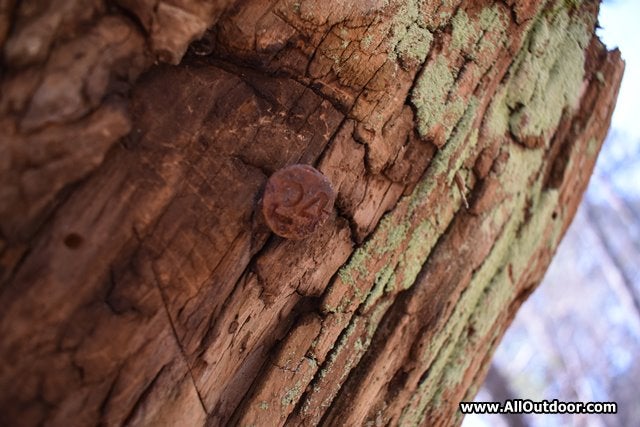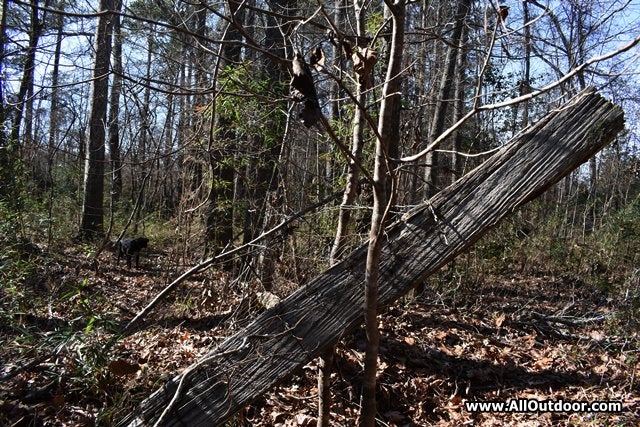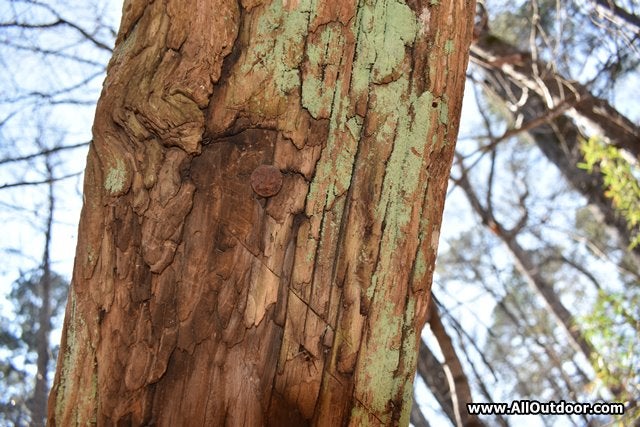Tips For Hunting Datenails
Kevin Felts 01.16.19

Some of the readers may be asking, “What is a datenail?” A datenail is a nail that was driven into a railroad crosstie when the crosstie was installed under the tracks. In some cases, even telephone poles used datenails. According to Wikipedia, the use of datenails on railroad tracks was phased out in 1959.
A typical datenail will have two numbers on the head. The numbers signify the year the crosstie was installed.
- A datenail with 28 on the head means the crosstie was installed in 1928.
- 40 would be 1940.
- 45 would be 1945.
- 50 would be 1950.
Using datenails allowed the railroad to know what year the crosstie was installed.
Even though datenails were used in dating railroad crossties, we are not going to be walking railroad tracks. Besides it being illegal and dangerous to be on railroad tracks, there are other ways to find datenails.
In rural areas, what would typically happen when a railroad comapny replaced crossties? Decades ago, the crossties were tossed to the side of the tracks and left to rot.
Eventually, some farmer would want to build a fence, so he went to a railroad and loaded a truckload of ties. Meaning, spread all over the nation are fences built with discarded crossties that may have date nails in them.
The key is to find old farms with fencing made from crossties. The closer the farm is to a railroad track, the better the chance to find fence post that used crossties.
Getting Landowner Permission
Next is to get landowner permission to walk the old fence lines. During the Great Depression, massive amounts of farm land was seized for property taxes, then sold to timber companies. On rare occasions old fence lines have survived numerous timber cutting operations.
For example, several miles from my house off in the woods is what looks like an old cattle chute. Chances are there was once a farm near the cattle chute, but the land is now owned by the timber company. To get permission, one would have to contact the timber company and ask if the land is leased.
If the land is owned by an individual, then a search of tax records may be able to provide the property owner’s name and contact information.
Be Respectful
If the timber company or individual grants permission, be respectful of the property. This means do not throw trash on the ground, including cigarette butts.
Personally, I do not like to remove datenails unless there is a reason. If the crosstie fence posts have been pulled up and are going to be disposed of, then I would remove the nail.
The reason being is to leave something for those who come behind you.
Be sure to get landowner before removing datenails,
Follow the Fence Line
Over the decades, sections of the old fence may have fallen down. A metal detector can be useful in following fence lines that have fallen down and are covered by leaves.

Eventually there should be a corner post where the fence makes a turn. Chances are the corner post will made from an old railroad crosstie. Look around the top of the post for a datenail. They will typically be around 8 – 12 inches from the end of the tie.
The crosstie on the fence line I was following had a datenail of 1924. The local sawmill burned down in 1925. So the crosstie was in use when the last of the virgin timber was harvested from the area.
Local History
In this area on Southeast Texas, the first tracks were put in around 1909. The crosstie dates to just 15 years after the track was first put down.
In the early 1920s sawmills across the Southern States were involved in an economic boom. However, when the last of the trees were harvested and the mills closed or burned down, people moved away to find work.
When this crosstie was put down, it was just one year before the mill burned down and the area suffered an economic disaster, and five years before the Great Depression.
Would it be safe to say that If the first crosstie lasted around 15 years before it was replaced, then the one being used as a corner post may have remained in use on the railroad tracks for about the same time?
If so, the tie would have been replaced around 1939 or in the early 1940s. If only that crosstie and datenail could talk, what would it tell us about early life in Southeast Texas? We can only imagine what it has seen — everything from a booming sawmill community, to the mill burning down, the Great Depression, and the start of World War II. Pretty amazing, when you think about it.
Good luck in your search for historical date nails.
